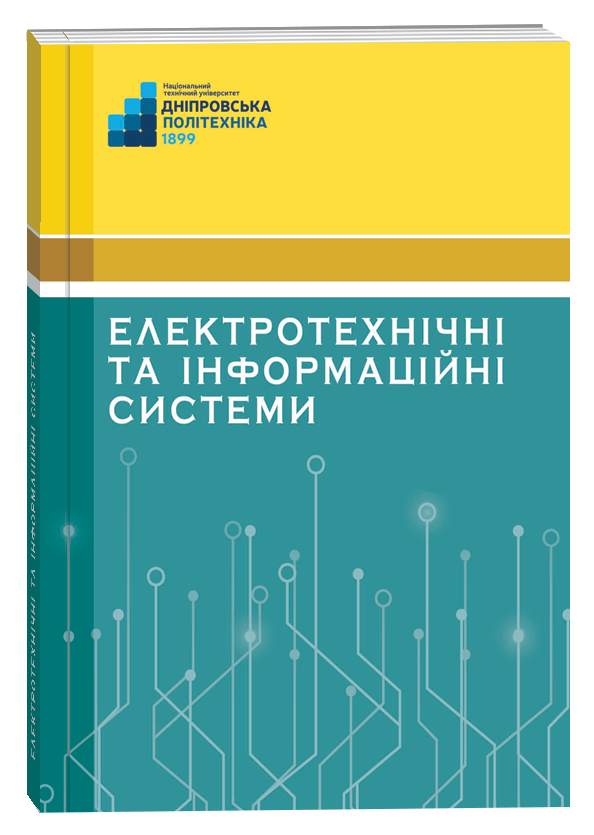THE ISSUE OF IMPROVING THE AUDIT ON LABOR PROTECTION
DOI:
https://doi.org/10.32782/EIS/2024-105-8Keywords:
risk, diagnosis, working conditions, dangerous event, dangerous factor.Abstract
An algorithm for diagnosing working conditions has been developed to improve the effectiveness of the work of labor protection specialists based on the resolution of the Cabinet of Ministers of Ukraine “On approval of criteria by which the degree of risk from economic activity is assessed and the periodicity of planned state supervision (control) measures for compliance with legislation in the sphere of protection is determined of work, industrial safety, work hygiene, handling of explosive materials for industrial purposes, work, population employment, employment and employment of persons with disabilities, implementation of state mining supervision by the State Labor Service” dated 05/20/2020 № 383. The proposed closed cycle of diagnosing the state of working conditions, which consists of five steps: creating a directory of hazards, conducting a preliminary identification of hazards, conducting an inspection of the state of working conditions, final assessment of the risks of each of the identified hazards, forming a “Report on non-conformities” that were discovered during checks. The main groups of hazards are defined for the formation of the directory of hazards, which take into account the economic activity of the organization. It is proposed for preliminary risk assessment, in addition to the probability and severity of the consequences of the impact of an event related to a specific identified hazard or dangerous activity, determined by the expert group, to use the duration of the impact of the event over time, which will allow monitoring possible changes in the characteristics of hazards. It is planned to use an additional parameter for the final assessment of the detected hazards – the “danger coefficient”, which is the value of the parameter “probability of occurrence of an event”, which changes based on the actual state of working conditions at this or that workplace. The scientific novelty consists in the diagnosis of the state of working conditions based on a preliminary assessment of hazards, which takes into account the duration of the effect of the dangerous factor on the employee, and the final assessment of hazards taking into account the coefficient. The practical value lies in the use of an algorithm for diagnosing the state of working conditions on the basis of a preliminary and final assessment of hazards, the difference from which is the use of a hazard ratio. Scales have been developed to assess the probability of a dangerous event, the intensity of the impact of a dangerous factor, and the duration of its impact.
References
Ніпіаліді О., Васильчишин О. Сучасний стан охорони праці в Україні у контексті забезпечення її інноваційного розвитку. Актуальні проблеми правознавства, 2020, № 1. С. 164–169. https://doi.org/10.35774/app2020.01.164.
Дембіцька С. В., Кобилянська І. М. Управління пізнавальною діяльністю студентів під час вивчення безпеки життєдіяльності шляхом впровадження методів проектного навчання. Педагогіка безпеки. 2016. № 1. С. 53–58. https://doi.org/10.31649/2524-1079-2016-1-1-53-58.
Чеберячко Ю. І., Дерюгін О. В., Архірей М. М. Удосконалення процедури проведення поведінкового аудиту безпеки праці. Вісник Приазовського державного технічного університету. Серія: Технічні науки. 2021. № 43. С. 179–190. https://doi.org/10.32782/2225-6733.43.2021.22.
Скриньковський Р. М., Костюк Н. Р., Семчук Ж. В., Коропецький О. О. Діагностика політики керівництва у сферах якості, інформаційної безпеки й охорони праці та механізм забезпечення гідної праці на підприємстві. Бізнес Інформ. 2016. № 3. С. 131–137. Режим доступу: http://nbuv.gov.ua/UJRN/binf_2016_3_18.
Яскал О. Діагностика ефективності праці на підприємствах в умовах розвитку інноваційної економіки. Економіка та суспільство. 2020. № 22. С. 8–11. https://doi.org/10.32782/2524-0072/2020-22-49.
Павловські Г. Діагностика ефективності нормування праці управлінського персоналу на підприємстві. Бізнес Інформ. 2017. № 2. С. 331–337. Режим доступу: http://nbuv.gov.ua/UJRN/binf_2017_2_50.
Лисенко Ю. В. Діагностика ефективності нормування праці управлінського персоналу на підприємстві. Наукові праці Кіровоградського національного технічного університету. Серія: Економічні науки. 2007. № 12 (1). С. 117–123. Режим доступу: https://core.ac.uk/display/42032048?utm_source=pdf&utm_medium=banner&utm_campaign=pdf-decoration-v1.
Кравчик Ю., Польова Н., Каткова Т. Діагностика ефективності системи управління організацією. Innovation and Sustainability. 2022. № 3. С. 87–94. https://doi.org/10.31649/ins.2022.3.87.94.
Колодяжний М. Г. Європейська стратегія Vision Zero: сутність й напрями запровадження в Україні. Нове українське право. Спеціальний випуск. 2023. № 1. С. 172–178. https://doi.org/10.51989/NUL.2022.6.1.24.
Севальнєв А. І., Шаравара Л. П. Оцінка професійного ризику порушення здоров’я працівників провідного металургійного підприємства. Український журнал з проблем медицини праці. 2015. № 4. С. 62–68. Режим доступу: http://nbuv.gov.ua/UJRN/Ujpmp_2015_4_9.
Цопа В. А. Принципи, структура та процес керування ризиками. Науково-виробничий журнал Охорона праці. 2019. № 1. С. 26–29. Режим доступу: https://ohoronapraci.kiev.ua/journal/ohorona-praci-12019?lang=#page=2.
Tsopa V.A., Cheberiachko S.I., Yavorska O.O., Deryugin O.V., Aleksieiev A.A. Improvement of the safe work system. Naukovyi Visnyk Natsionalnoho Hirnychoho Universytetu, 2022. № 6. P. 104–111. https://doi.org/10.33271/nvngu/2022-6/104.
Цопа В. А., Маматова Т. В., Яворська О. О., Чеберячко С. І., Чеберячко Ю. І., Дерюгін О. В. Формування нової концепції здорового і безпечного робочого місця в Україні. Проблеми охорони праці в Україні, 2023. № 39 (1–2). С. 28–37. https://doi.org/10.36804/nndipbop 39-1-2.2023.28-37.





